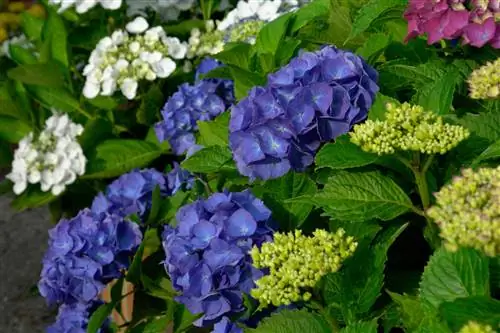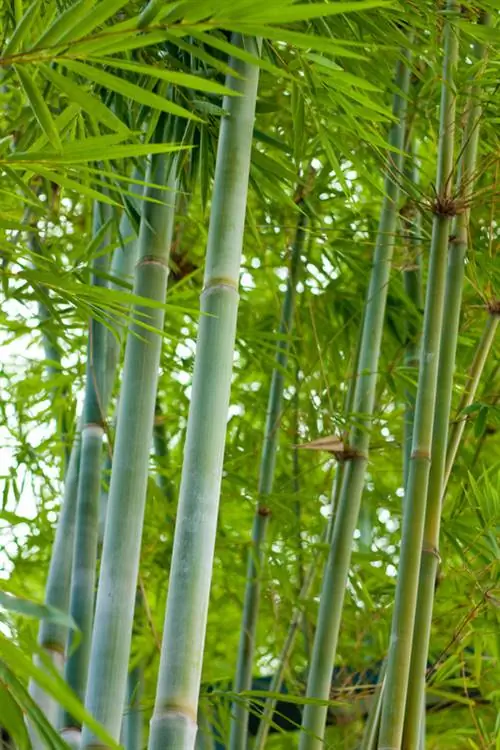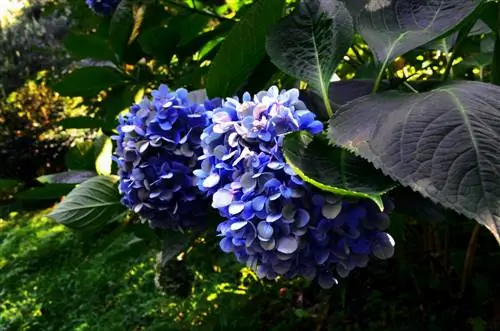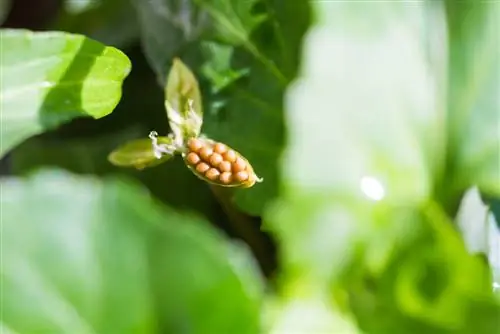- Author admin [email protected].
- Public 2023-12-25 17:45.
- Last modified 2025-01-23 11:22.
The magnificent flower balls of the hydrangea delight every gardener in summer. With their bright colors they provide variety in the garden. In this article you will learn about the properties and special features of hydrangea flowers.
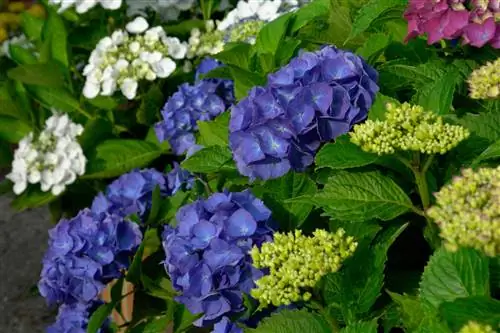
What do I need to know about hydrangea flowers?
Hydrangea flowers grow in clusters. They can bloom white, pink or purple, but green and even blue flowers are also possible. The flowering period is from June to September. Depending on the variety, you should remove spent inflorescences in autumn or spring. If your hydrangea doesn't bloom, it's due to too little sun, incorrect pruning, frost or fungal infection.
What do the hydrangea flowers look like?
Hydrangea flowers growUmbelsEach umbel develops many small flowers that bloom white, purple or pink depending on the hydrangea variety. Blue and green flowers or a color change during the flowering period are also possible. Another special feature of hydrangea flowers is that their flowers become increasingly firm as the flowering period progresses. If they are very tender in June, they will become significantly more stable by August. A hydrangea flower does not produce seeds and therefore no fruits.
When do hydrangeas bloom?
The flowering period of hydrangeas is very long and runs fromJune to September. Depending on the variety you choose, the individual period may vary slightly.
Should I cut off spent hydrangeas?
You should only prune faded hydrangeas carefullycut backLeave the old inflorescences on the plants until next spring so that they protect the young buds that develop in autumn from the cold protect. The panicle and quickball hydrangeas are an exception. These hydrangea varieties are more cold-resistant and do not develop their buds until spring. That's why you can cut back the dried flowers of these varieties in autumn. If you want to put hydrangea flowers in a vase, you should only cut them off in late summer as they will last longer.
What can I do if my hydrangeas don't bloom?
If your hydrangeas do not produce flowers, this is usually due to acare error or unfavorable location conditions. One of the most common reasons for a lack of flowering is a location that is too shady. Even if the perennial was cut at the wrong time, froze after sprouting or is infected with fungus, it will usually not bloom the following year.
Tip
Coloring hydrangea flowers
Hydrangeas bloom white, pink or purple. With a little skill, you can naturally turn the flowers of your hydrangeas blue. A particularly low pH value of the soil is crucial for the color change, which you can achieve, for example, by fertilizing with leaf compost.

